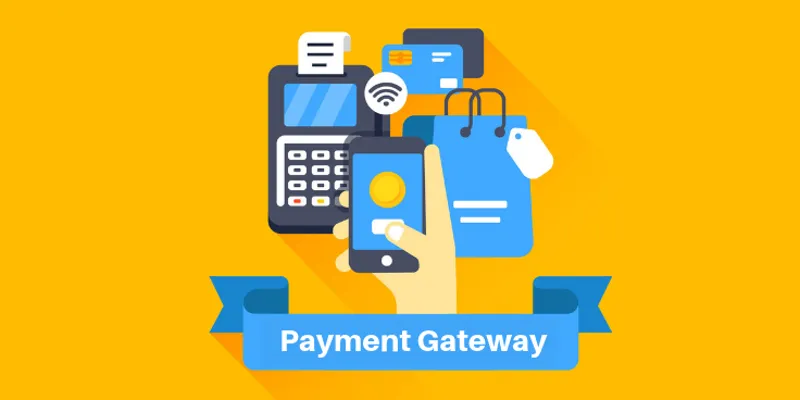[YS Exclusive] Enough capital in our balance sheet, no plans to raise fresh funding: Razorpay CFO
Razorpay has achieved breakeven in its online business and aims to go for an IPO in the coming years once it reaches consolidated profitability.
, one of the leading fintech startups in the country, unveiled a suite of products at its recently-concluded flagship event—FTX. These new products address needs of both offline and online customers especially in the area of payment gateways as the company goes ahead with an omnichannel strategy.
Given that it has achieved an annualised total payment volume of $150 billion, Razorpay aims to fund its newer forays through the cash generated from its key online business.
In an exclusive interaction with YourStory, Arpit Chug, Chief Financial Officer, Razorpay, said, “We have enough cash on our balance sheet and our burn rate is minimal.”
Edited excerpts from the interview.
YourStory [YS]: What is the profitability goal for Razorpay?
Arpit Chug [AC]: In our online payments business that has been around for a few years now, we have achieved break even. In the new businesses, whether it is offline or international, we are on the investment mode. For the next couple of years we will be generating enough cash from our online business to fund those investments. There are a lot of opportunities in these new businesses.
On the IPO, we are a couple of years away and will look at it once we achieve consolidated profitability.
YS: Will Razorpay look at a fresh round of funding?
AC: We are well-funded at this point of time and we have not used most of the money we raised a few years ago. So, we are not looking at a fresh round of funding as there is a lot of cash on our balance sheet, with our burn being minimal.
YS: How was Razorpay’s performance in 2023?
AC: In the year 2023, as you are aware, we were not onboarding new merchants, but despite that, it was a fairly healthy year for us in terms of growth. We delivered almost 50% growth in our volumes where we spoke of achieving $150 billion annualised total payment volume. All this came from expanding our share from the existing merchant customers with newer products and services.

The acquisition of Ezetap gave us tremendous growth in the traditional offline business with point of sale (PoS) devices, which are used in mid-market and large enterprise stores. Our newly-introduced UPI-enabled QR device is going to fuel the growth in the coming years. For 2024, we expect to have a fairly healthy growth rate.
YS: Who are the key customers for Razorpay?
AC: If you look at global companies, they’re either targeting enterprise customers or the small and medium customers. At Razorpay, we have the ability to support the largest customers and support those persons who don’t even have a website. We let them quickly create a website and then accept payments on that. So, I think that’s the unique part about Razorpay. We understand that the needs of the small merchant will be different from those of the large merchants. So internally, we have teams that focus on the needs of both small and large merchants. But our big focus, and what we really feel very happy about doing, is enabling small businesses to be successful.
YS: What has been the omnichannel strategy of Razorpay?
AC: In the online payments business, we target both the small and large businesses. In the offline segment, the focus is more on mid-market and large enterprise products and this fits into our omni channel strategy. A small kirana store is unlikely to be part of omni channel and want to keep it short. In the mid-market, there are those who have two to three stores who are also thinking about selling online. These examples fit into our definition of omni channel.
YS: What is the overseas expansion plan of Razorpay as it has already forayed into Malaysia?
AC: Malaysia is step one of our international journey to Southeast Asia. The entire region is very attractive to us. Most markets there are in a place where India was around 8-10 years ago. They are also trying to put together an UPI equivalent kind of payment system. So, you will definitely see us expand to one or two international markets in the coming years, but we are also doing it thoughtfully.
YS: What role do you see Generative Artificial Intelligence (GenAI) and AI play in the world of finance?
AC: We have to use AI and GenAI as an ally. We have to be careful that it doesn’t create problems. Today, there is a huge volume of activity that finance departments are going through and it cannot function unless there is a lot of technology and automation. I think the real art is in using some of these capabilities, but having your own control framework to make sure that they are helping you and not misleading you.
In finance areas like reconciliation, I think they are going to play a key part. Technology helps in making sure that one is doing the right thing and if something is odd, it will get flagged. So, I think those are the areas where you can use AI technology to flag things.
Edited by Megha Reddy






![[YS Exclusive] Enough capital in our balance sheet, no plans to raise fresh funding: Razorpay CFO](https://images.yourstory.com/cs/2/220356402d6d11e9aa979329348d4c3e/razorpay-arpit-chug-f-1708770269261.png?mode=crop&crop=faces&ar=2:1?width=3840&q=75)
![[Startup Bharat] Y Combinator-backed BeWell Digital is enabling the digital transformation of radiologists](https://images.yourstory.com/cs/2/40d66ae0f37111eb854989d40ab39087/ImagesFrames31-1648033042143.png)